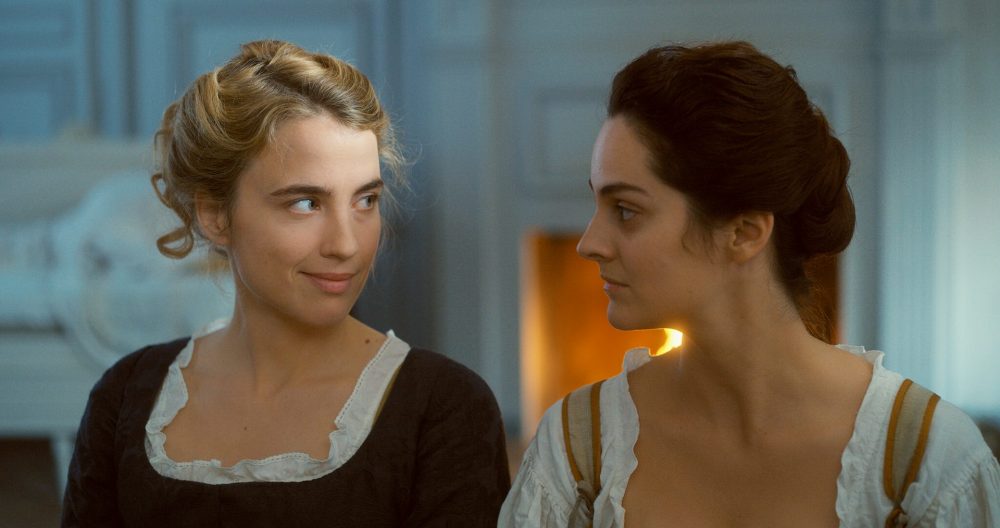‘Portrait Of A Lady On Fire’ The film that set critics and audiences on fire
Imagine you meet the love of your life when you least expect it. Neither of you are ready or have a language to express your attraction to each other. Now, imagine that this all happens on a remote island off the coast of 18th century France.
You are a painter and your job is to observe your lady by day and paint her portrait, in secrecy, by night. Now, imagine that portrait is part of a marriage pact that will take her away from you, forever…
Such is the plot of Portrait Of A Lady On Fire, the new French feature film written and directed by Céline Sciamma.
Yes, it’s very French, which is to say it’s a film that is as much about ideas as it is about action. Sciamma (Water Lilies, Tomboy) has created an aesthetically-pleasing miracle, an impossible narrative that sounds like a Victorian novel written by the Bronte sisters — if they were French and gay; a novel you should have read in school but which somehow slipped under your radar; a novel that in fact does not exist.
Because it doesn’t. Sciamma has created a work that should have been part of a literary canon had it cared at all what women felt, did, or thought. With Portrait Of A Lady On Fire Sciamma inserts a great, never-told lesbian love story into the seam of history itself.
Now, I know women who were not exactly set on fire by this film. Perhaps it was the two unknown leads (Noémie Merlant and Adèle Haenel, equal parts ethereal and earthy). Perhaps it was the subtitles. Or the rugged, windswept Breton backdrops.
Or the well-worn convention of wrestling with desire through the act of art-making. And there’s always something about corsets that makes some people squirm. But, ladies, I’m telling you: this film truly got to me and I think it’s one of the best international offerings of the year. For me it’s like crusty bread, a rustic wine and a cheese with a hard rind. Oh, and choral music. Get your teeth into it.
Portrait might seem like a precious invention, but why not? The history of European art is nothing if not precious inventions desired and expressed by men. Here’s one desired and expressed by women instead. It’s a beautiful wrriten, skilfully constructed, and confidently directed film.
The shots of painting in progress — from charcoal on an un-primed canvas to the finished result — are the work of artist Helene Delmaire. But the scope of the narrative, including the metaphoric use of the legend of Orpheus and Eurydice, and a fine and ironic performance by Valeria Golino (Rain Man) is that of the rarest thing in our culture: a lesbian auteur.
Painter Marianne (Noémie Merlant) and Héloïse (Adèle Haenel), her about-to-be-married former Benedictine convent girl subject, are drawn together by the act of female creativity. They are drawn even closer after their maid becomes pregnant and they take her to a matriarchal gathering of wise women to seek counsel for the unwanted conception.
There are few men in this film and none are main characters. And this scene, set at night around a crackling bonfire to the sound of choral chanting (composed by Para One and Arthur Simonini) is a stand-out for its embodiment of feminine essence.
What looks like an art house movie is really a political act. Because: we were there, centuries ago — frustrated, oppressed, corseted into heteronormative existences, whether on the coast of Brittany or the art society of Paris. Even when we weren’t named and out we were there: ladling soup, administering abortions, tucking love letters into books, leaving secrets in the margins, and yes, painting portraits of fancy ladies.
As Sciamma astutely noted in an interview recently, “[I]n the second half of the 18th century, there were hundreds of women painters. I wasn’t aware of that. We’re always told that women’s opportunities are linear, always growing, but that’s not the case. It’s always in cycles. Today, we’re going through a phase and experiencing backlash and resistance. The story of women repeats itself.”
Portrait Of A Lady On Fire is passionate, elegant, and elemental. And, it presents the best use of Vivaldi’s “Summer” from Quattro Stagioni that I have ever heard and seen in a film. The final sequence will leave you with a lump in your throat. Grab your girl, or someone you’d like to be your girl, and go see it.
